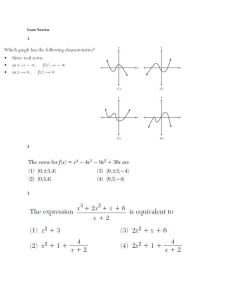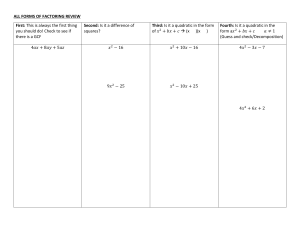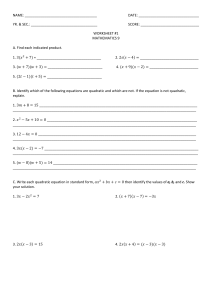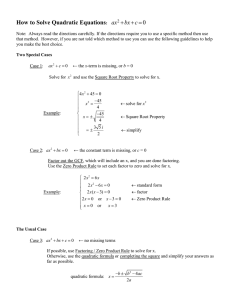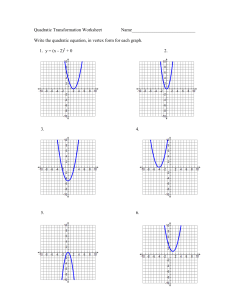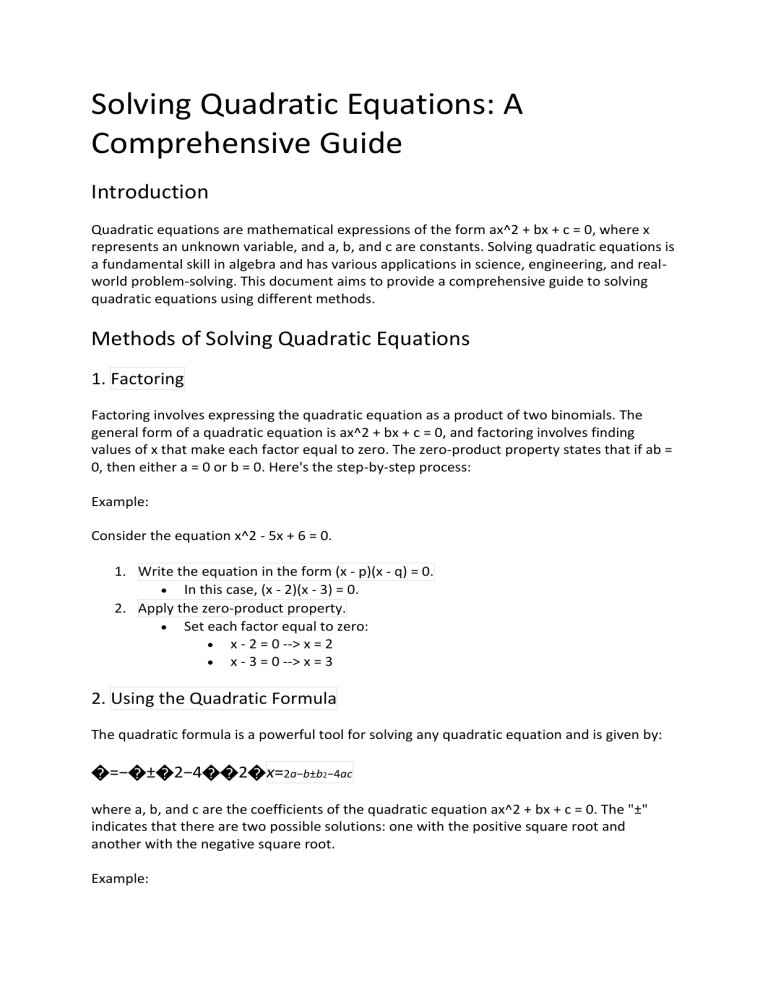
Solving Quadratic Equations: A Comprehensive Guide Introduction Quadratic equations are mathematical expressions of the form ax^2 + bx + c = 0, where x represents an unknown variable, and a, b, and c are constants. Solving quadratic equations is a fundamental skill in algebra and has various applications in science, engineering, and realworld problem-solving. This document aims to provide a comprehensive guide to solving quadratic equations using different methods. Methods of Solving Quadratic Equations 1. Factoring Factoring involves expressing the quadratic equation as a product of two binomials. The general form of a quadratic equation is ax^2 + bx + c = 0, and factoring involves finding values of x that make each factor equal to zero. The zero-product property states that if ab = 0, then either a = 0 or b = 0. Here's the step-by-step process: Example: Consider the equation x^2 - 5x + 6 = 0. 1. Write the equation in the form (x - p)(x - q) = 0. In this case, (x - 2)(x - 3) = 0. 2. Apply the zero-product property. Set each factor equal to zero: x - 2 = 0 --> x = 2 x - 3 = 0 --> x = 3 2. Using the Quadratic Formula The quadratic formula is a powerful tool for solving any quadratic equation and is given by: �=−�±�2−4��2�x=2a−b±b2−4ac where a, b, and c are the coefficients of the quadratic equation ax^2 + bx + c = 0. The "±" indicates that there are two possible solutions: one with the positive square root and another with the negative square root. Example: Solve the equation 2x^2 - 5x - 3 = 0 using the quadratic formula. 1. Identify coefficients. �=2,a=2, �=−5,b=−5, �=−3.c=−3. 2. Apply the quadratic formula. �=5±(−5)2−4(2)(−3)2(2)x=2(2)5±(−5)2−4(2)(−3) Simplify and compute to find two possible solutions. 3. Completing the Square Completing the square is a method that involves transforming a quadratic equation into a perfect square trinomial and then solving for the unknown variable. Example: Consider the equation �2+4�−5=0x2+4x−5=0. 1. Write the equation in the form �(�−�)2+�=0a(x−p)2+q=0. In this case, (�+2)2−9=0(x+2)2−9=0. 2. Solve for x. (�+2)2=9(x+2)2=9 Take the square root of both sides and solve for x. Conclusion Understanding and applying these methods for solving quadratic equations provides a solid foundation for tackling more complex mathematical problems. Whether using factoring, the quadratic formula, or completing the square, these techniques empower individuals to find solutions to quadratic equations efficiently and accurately.
